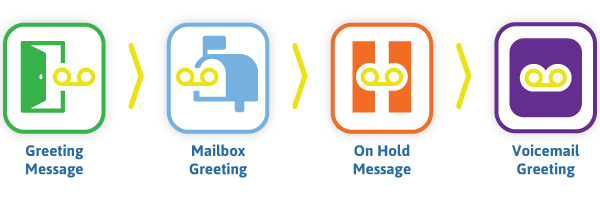
Making Contact is the Goal
Small businesses have different reasons why they search people by address using public records data. They might be doing a people search to prospect for new customers or they might be looking for current contact information of an existing customer. The goal, though, is always the same. The business wants to find a current phone number so they can make contact with the customer.
In the business world there’s a lot of talk about getting the best data: people search, batch search, phone appends, etc. But there’s not a lot of talk about getting in contact with the people you’ve searched. A business’s goal is not a phone number, it’s a phone conversation. So, let’s talk about the real goal, making contact with customers.
We covered this topic in a recent webinar and got lots of positive feedback. Here in this post we’ll go through the essentials of how to search people by address and contact them by phone. I know, it sounds so simple, why have a blog post about it. But, there are things many businesses miss that dramatically lower their people search success rate.

Search People by Address & Name
Let’s assume we are searching to find a person’s current phone number and the information we have to search on is their full name and address. Depending on the source, the address you have may not be current and it could be either their property, mailing, or business address.
The results we get from our search will help us determine the type of address and the associated phone numbers. Which type of address is valuable to you is dependent on your business. The same is true with phone numbers—mobile or landline.
People Search Sites
There are many people search websites you can use, such as TLO.com, beenverified.com, and of course our site belleslink.com. Data quality varies from site to site. Services that provide credit bureau-level data will give you the most accurate results.
Useable Search Results
Data usability is something to look for in a people search website. Some services give you mountains of data in their search results. It may seem like a good value, but it’s not because it takes too much time to sort through.
You want useable, actionable data that’s highlighted for you in the search results. Numbers should be divided by phone type, mobile or landline. Ranked search results are best, such as a list of addresses or phone numbers sorted with active dates, most current to least current.
Save Six Phone Numbers
The best phone number for a person is most often found in the three most current results. Unless you only want mobile numbers because you’re going to text only, save the top three landline numbers and the top three mobile numbers.
Get the Caller IDs
You want to know who you’re calling before you call. A caller ID will tell you. It’s common for a number to be billed to the person you searched but actually be used by a spouse or child. If the caller ID is an unrelated name, don’t waste your time. Take it off your list.
You may have to run an additional caller ID search on the numbers you’ve saved. A good people search website will have a way for you to get this data.
Remove the Disconnected Numbers
Don’t waste your time calling bad phone numbers. Use a number scrub to remove the disconnected numbers from your list. Even credit bureau data can be out of date. Don’t assume every number you saved is good.
BellesLink has a number scrubbing tool in our case manager. All numbers returned in our batch people search results have already been scrubbed. Batch results include only good phone numbers.
So, now you’ve done a search, got a list of good numbers and you’re ready to make phone calls. Let’s look at the rest of the process.
They Aren’t Expecting Your Call
Whoever it is you’re calling, a new or existing customer, you need to remember they aren’t expecting your call. You’ll need to overcome someone’s natural reluctance to answer or return your call, or text, by being clear, friendly, and professional in every part of your communication. That includes both the call you make to them and what they experience when they call you back. It seems like common sense, but many businesses get poor people search results because they fail to make a good call impression.
The Call Impression Counts
A “call impression” is how we describe a customer’s reaction to the call you make to them and what they experience when they call you back. It’s made up of your outbound call, their inbound call, your recorded call greeting, a possible on-hold message, and your recorded voicemail greeting. It includes everything a customer hears from you before you actually talk with them for the fist time and the success of each piece depends on the one before it.
It’s most likely the person you call won’t answer their phone. You’ll need to leave a voicemail message and ask for a call-back. Even though this is the most likely scenario, many businesses fail to setup quality messages that create a good impression when the customer calls back.
Here are things that create a bad call impression.
- Calling a customer from a number that does not use their local area code.
- Leaving a vague voicemail message that does not clearly state the reason for your call.
- Using your mobile phone number to receive call-backs.
- Answering call-backs with a simple “Hello” instead of answering as your business.
- Sending a call-back to your personal mobile phone voicemail.
- Answering a call without recognizing, before you pick up, the caller is returning your call.
- Asking a call-back to leave you a voicemail without giving them more information about your business and the reason you called them.
These are simple, common-sense things that would make a bad impression on anyone, including you. In fact, the way to pre-pare to make the best call impression is to think like a caller yourself.
Plan the Call in Reverse
Planning the call in reverse means starting from the result you want your calls to create and working backwards from there. It’s fair to say that for every call you make, the result you want is a call-back. But it’s not always true that you want to answer every call-back. Sometimes you want to send call-backs directly to a voicemail. Other times you plan to answer every call that comes in.
Planning for a live answer versus a voicemail means setting up your phone number, and all its component messages, differently for each scenario. There’s a scenario where you set up for a live answer if you’re available, but also set up to send the call-back to voicemail when you’re not. There’s also a scenario where you offer the caller the choice of speaking to a live person or hearing a recorded message with the information they called to get.
Of course all of these options depend on the nature of your business and the nature of the offer you’re making. Many real estate agents will live answer calls related to a specific property they have on the market, but will send calls made to a local number they used in a bandit-sign campaign directly to a call greeting with information about their service.
By planning the call in reverse a business can create a good call impression in every scenario.
Essential Components for a Good Call Impression
When you search people by address and contact them by phone there are four components you must have to create a good call impression when you call them and when they call you back.

#1 – A Local Phone Number
Use a local phone number with an area code that matches the location of the people you’re calling. Statistically people are more likely to answer a local call.
#2 – A Call Script
Write call script for your initial call to the person. Your script needs to cover two scenarios: (1) if the person answers your call, (2) if you need to leave a voicemail message. Be clear, friendly, and professional in everything you say and be specific about what you’re asking them to do. E.g. “If you want to know how much your home is worth, call me at 970-328-0400 for a free estimate.”
#3 – A Greeting Message
Create a greeting message that is in-sync with the offer in your voicemail. The greeting message is played when you don’t answer an incoming call and before the call is transferred to voicemail. It can also be played before a call is transferred to a live person. This is the first thing a person hears when they call you back. It’s got to relate to the voicemail you left on there number and it’s got to be good at winning you customers.
#4 – A Voicemail Greeting
Create a voicemail greeting that is in-sync with your greeting message and sets the caller’s expectations for the next steps. E.g. “Leave me your name, number, and the address of your property and I’ll return your call by the next business day.”
Of course the content of all these call components will vary based on the result you want from the call—a live answer or a message. Because you’ve planned the call in reverse, you’ll know exactly how to be successful.
We suggest setting up a unique local number to each call scenario you’ve planned. This will allow you to segment your calls. When a person calls you back on a number you set up for your “Denver-metro” marketing campaign, you’ll know exactly why they’re calling, even before you answer.
Segment & Track Your Calls
It’s most likely your business will have at least two different call scenarios to set up numbers for, a live-answer scenario and a forward-to-voicemail scenario. Setting up these two numbers will give a basic way to segment and track your calls.
Segmenting calls become even more useful when you set up unique local numbers for a particular marketing campaign. For instance, a real estate investor mails yellow letters to a list of properties that are all in one neighborhood. They set up a local number just for that campaign and include the number in the letter. When someone calls them on that number they know, even before they answer, what that call will be about. They will be able to create a better call impression with the person.
Whether it’s a live-answer or forward-to-voicemail scenario, segment your calls with local numbers gives you a way to track the effectiveness of your marketing campaigns by seeing the response they generate and the number that you can convert to customers.
Focus on Making Contact
We’ve covered a lot of ground in this post. I hope it’s giving you a clearer picture of how to be successful when you search people by address and contact them by phone.
To do the searches and make the calls the way I’ve outlined you’ll need both a public records database and a virtual phone system. BellesLink combines those two things in a people search platform you can use to find and contact customers. Check out our features page for more information.
Remember, don’t get caught up in the data, focus on making the contact. When you’re doing people search the goal is not finding a phone number, it’s having a phone conversation. Though much of what we’ve covered here are simple, common sense things many businesses miss the details that deliver good search results, make a good call impression, and make you successful with people search. Now that you’ve read this post, I know you’ll knock it out of the park, from search to call.

